Matador Network's Blog, page 2167
December 27, 2014
Chile's best coastal towns
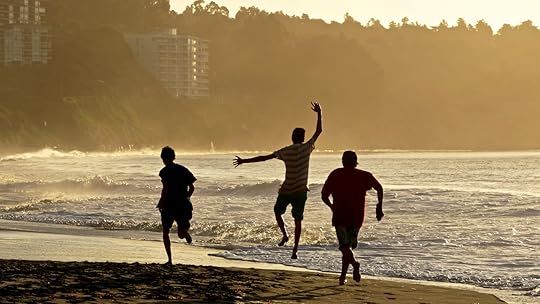
Photo: Alobos life
Viña del Mar
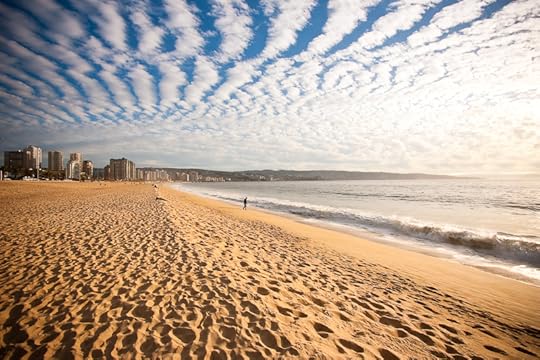
Photo: Bruno Trevisan Dini
Since the 1800s, Santiaguinos have flocked to Viña’s beaches to escape the city’s summer heat.
If you don’t mind a crowd (and the towering condominiums), the beach and accompanying boardwalk offer a variety of treats: sunning yourself on a stretch of sand, a seaside artesanía (handmade crafts) market, and smaller stands with refreshments and ice cream.
Vendors wander the beaches selling cuchuflis and dulces. You can watch sand sculptors turn tiny grains into octopi, buffaloes…even characters from the Simpsons.
Since the roads can be congested, a bus from Santiago is most convenient. The ride from the University of Santiago station takes an a hour and a half, and you arrive in Viña, a twenty-minute walk from the beach.
La Caleta (Pan de Azucar National Park)
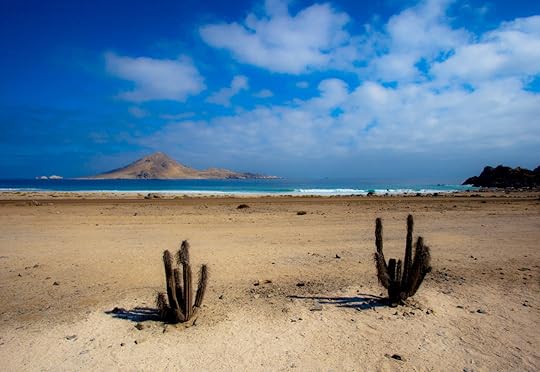
Photo: Esther Lee
Pan de Azucar is a beachside national park located in the Atacama Desert. Though technically too small to be considered a town, it’s too pretty not to be on this list.
Bring your tent and for 3,500 pesos a night you can sleep under a cabana at Piqueros with a view of the beach to the west and the stark beauty of the Atacama to the east.
Or for even less, camp in the more crowded, party-friendly sites at Piqueros Norte and La Caleta. La Caleta is the “town” in Pan de Azucar, with two restaurants and a mini-market for stocking up on essentials.
Once you’ve had your fill of beach fun, take a boat tour for 5,000 pesos (about $9) to the island where 5,000 penguins have taken up residence. The boat gets close enough to see rows and rows of them, the juveniles still puffy with feathers and the couples standing together in the shade.
You can also hike up to the mirador for a killer view of the desert plain as it spreads out against the coastline.
Isla Negra
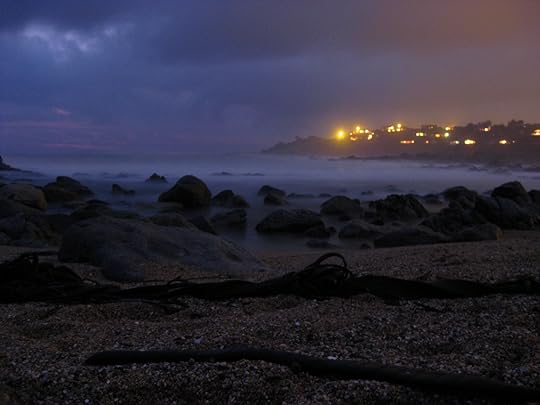
Photo: :RoMaNo:
Isla Negra is the site of Pablo Neruda’s favorite beach house. The famous Chilean poet referred to himself as a “cosista,” one who collects “things.”
His retreat is filled with glass paperweights, masks from around the world, colorful dishes — anything that caught his eye.
Outside, you can admire the view that inspired Neruda’s many poems and walk the beach.
The bus from Santiago drops you five minutes from the main highway, with nearby restaurants serving up quality fish like corvina and congrio.

More like this: Ten places not to miss in Santiago de Chile
Algarrobo
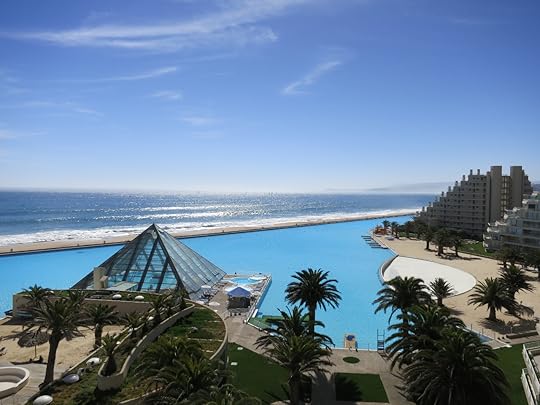
San Alfonso del Mar, the largest swimming pool in the world. Photo: Kyle Pearce
Located to the south of Valparaiso and Viña del Mar, Algarrobo’s tall waves and expansive sand provide a peaceful respite from the crowds, especially the farther you wander from downtown.
Rent kayaks, swim in calm waters, and take a ride on a raft, all within a protective alcove that makes the ocean look like a lake. Near the private condominium resort San Alfonso del Mar, walk for miles on the beach and lay out in relative isolation — a delightful alternative to normally crowded Chilean beaches.
While you’re there, take a peek at the resort, which claims the Guinness Book of World Records title for largest swimming pool in the world.
Cachagua
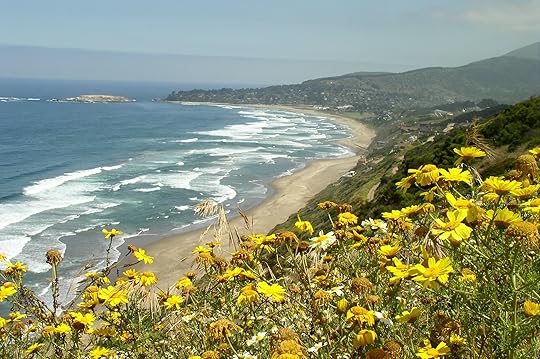
Photo: Grauke/O
Located 100 miles northwest of Santiago, Cachagua is a small town with a two-mile beach and not much else.
If you want to relax and enjoy the sun and the waves, Cachagua is the perfect spot. If the water is too cold to your taste (and it will likely be, thanks to the Humboldt current coming from Antartica), take a boat to the nearby rocky island Monumento Isla Cachagua to observe the Humboldt penguins that nest there from September to April. Horse-ridding and surfing are also very popular activities.
Zapallar
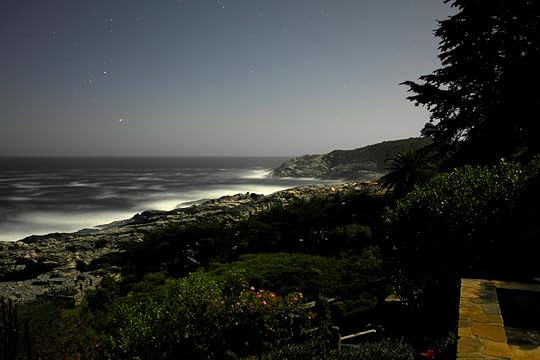
Photo: Benja Solar
Five miles north of Cachagua is Zapallar, a secluded small town that is the favourite destination of the weathly inhabitants of Santiago.
Don’t let Zapallar’s population scare you away and enjoy the beautiful coastal trail that provides a view of the ocean like no other. The beach is usually quiet, so it’s great for those in need of tranquility; however, the water is still very cold.
Valparaiso
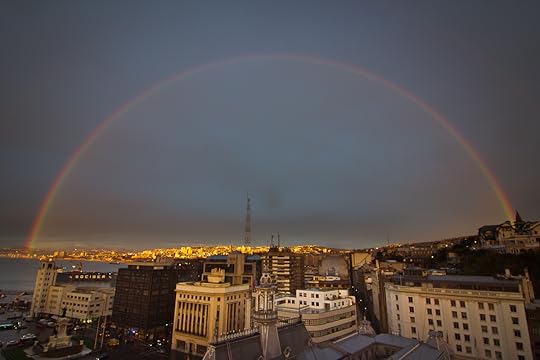
Photo: DGTXl
Valpo, as it’s affectionately known to locals, is a place of details.
Every corner, every nook offers something different and new: a clothing flea market, a gigantic mural, a purple house, a rustic restaurant with unobstructed views of the ocean, a coffeeshop that serves black coffee and refuses to offer Nescafe (instant coffee is ubiquitous in Chile).
It’s a city that must be walked. Take the ascensor accessed from Esmeralda Street and wander Cerro Concepcion, where you’ll find Café Concepcion on Papudo. The restaurant — and the hill for that matter — has a spectacular view of the bay.
Near the main plaza, order buttery Mil Hojas ice cream at Vitamin on Avenida Pedro Montt #1746.
La Serena
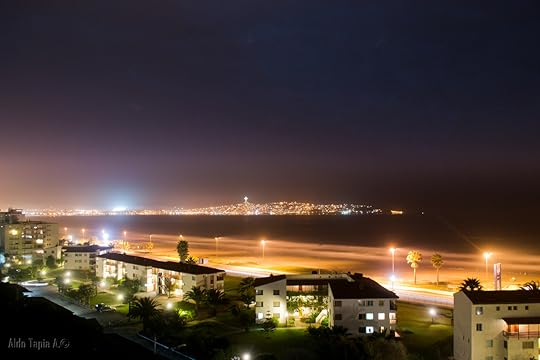
Photo: Aldo Tapia
La Serena is a beachtown, plain and simple. Its broad sidewalks and grid layout are easy to navigate, its people chill.
Visit Mercado La Recova for handmade jewelry, musical instruments, clothing, and plenty of food. Be sure to purchase a jar of homemade manjar, a sweet cream made from condensed milk popular in Chile.
Looking for the beach? Avenida del Mar, the coastal road, provides access to at least 10 of them. 
A surfer's guide to Asturias, Spain
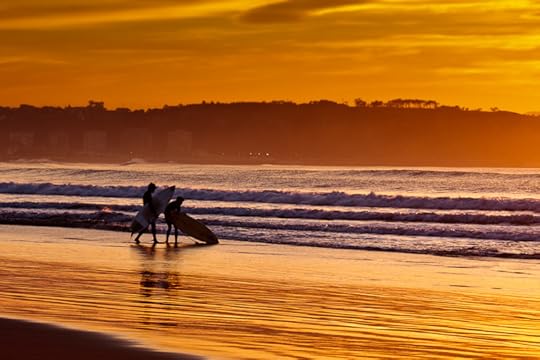
Photo by Jose Rebollar
ASTURIAS, THE PROVINCE on the northwestern coast of Spain just east of Galicia and west of Cantabria, is a narrow strip of mountains and coast line, creating steep cliff drops to the Atlantic Ocean.
The whole coast is a series of cliffs giving way to scallop-shaped sand or pebble beaches.
A province of misty green mountains, blue waters, bagpipes, prehistoric caves, Bronze Age dolmens, Iron Age Celtic settlements, and pre-Romanesque churches, Asturias is unlike other parts of Spain. Amidst this ancient smorgasbord, there are dozens of surf spots, some famous but most only known by the locals.
To catch the best waves, you need to travel here in the fall, winter, and spring, which happen to fall in the cheaper off-peak season. There are enough surf spots in Asturias that you can find your own and avoid the localism at the more famous places, like Rodiles and Tapia de Casariego.
Asturians are both sophisticated and earthy people. It is a land of human-scale cities and many, many rural villages set in rolling green hills with views of the big blue Atlantic.
The Picos de Europa, one of Europe’s best preserved natural mountainous areas, sits as a backdrop. City, village, coastline, and mountain are all interconnected by new roads and old footpaths.
It’s the footpaths that are fascinating. At first you may not even see them. I didn’t until I asked for directions many times from locals and kept getting these organic responses with shortcuts through fields and passages along narrow worn paths.
That was when I realized the world of paved roads was secondary to locals. For a surfer, what these footpaths indicate is that the more challenging access to beaches pretty much clears out rabble rousers who might crowd the waters if access were easier.
The true soul surfer can find his or her sweet spot pretty much unmolested.
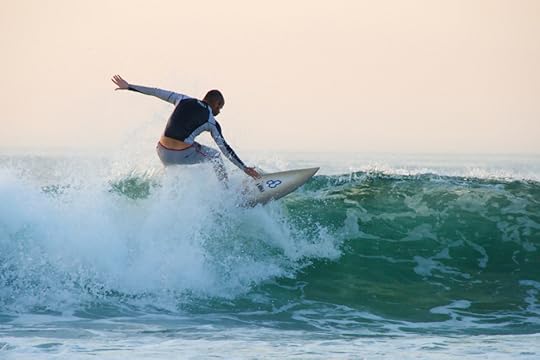
Photo by Lares
How
Part of the fun of surfing in Asturias is discovering the foot paths that lead to little-known surf spots. I’ve been exploring surf in Asturias for over ten years and have found the best ones through patient exploration into wonderfully wild terrain.
I first go out for exploratory walks along footpaths, asking locals for their expertise as I go. Sometimes I’ll fall into a path serendipitously. And sometimes paths are a dead end at a cliff drop, a mislead forged by the ubiquitous free range goats who also use the paths to get to their own slice of nirvana.
Over the years of trekking and surf hunting in Asturias, through trial and error, I’ve also unearthed three indispensable books that help me unearth the wild reality of Asturias, her footpaths and her surf spots. (They are noted below.)
Having located your access route, checked the surf, and talked to the locals for their invaluable local knowledge, you can fall into a joyous rhythm of coming and going from the surf to the village where you’re staying and to the local cafes and restaurants.
Food & Drink
The Spanish are fierce believers in the basic human right to eat and drink well. They are gregarious and generous people and their villages often have no less than four bars and cafes, even in a population of 300 or less.
The offering gets bigger and headier the bigger the town. In all contexts, the food is always locally procured, fresh, delicious, and affordable. You save a lot of money but get the same quality by ordering the fixed price menus (menus del dia), which are three courses (a starter, an entrée, and dessert), often for around 10-12 euros, including wine and bread.
Asturias is in apple country and produces hard cider, called sidra, a crisp, dry, frothy, apple and sun infused elixir. And because wine country is not far away, including the famous Rioja wine country, really good wine is madly affordable.
Villages across the country, including in Asturias, have weekly open air markets, a good time to see what the locals produce as well as purchase fresh, often organic provisions for eating in and picnicking out.
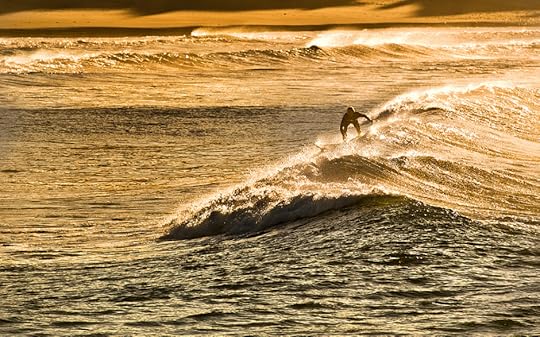
Photo by Cangues
Playa de San Martin
One of my favorite spots is Playa de San Martin.
Just west of the fishing town of Llanes in eastern Asturias, San Martin can be reached only via footpaths from the village of Celorio.
San Martin is set amidst a cliff that opens to an expansive sandy beach with giant stone formations carved by the ocean. It is a beach break that picks up the swell well and is best at low tide. Winds come in from the south, southeast, and sometimes northeast. Waves are rapid and ridable with variable peaks.
Localism is nearly nonexistent even though this is a beloved spot among surfers from Llanes. If you go, act like a good guest so that localism will remain low here. (The fact holds that most localism in northern Spain emerges from arrogant behavior from visitors and as such incites a local counter-response…)
After a session in the water and climbing up the cliff path that got you there, head back to Celorio’s village beach and enjoy frothy beers and local tapas at the beachside café.
Recommended Tapas
Calamares, shrimp sautéed in garlic (gambas al ajillo), chorizo in cider (chorizo a la sidra), and when in season, little fried green peppers with sea salt (pimientos de Padrón).
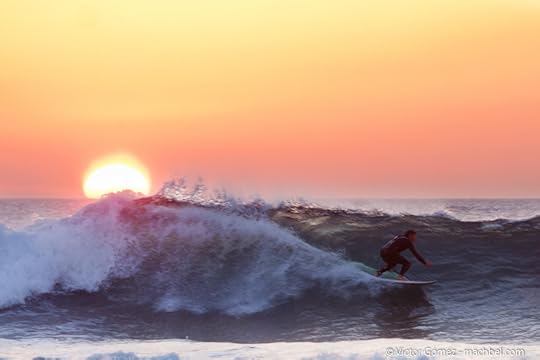
Photo by Victor Gomez
Green Note
Most Asturians are environmentalists who love their wild places. Villages and towns have clusters of bins that are for recycling and for trash. Use them.
Respect the wild and human places alike. Asturians are very warm people and if you act with warmth and respect, you will find yourself quickly adopted and will find the life so serene and complete that you’ll be hard pressed to leave.
Camping Sites and Surf Shops
Called “Campings” these sites are sprinkled throughout Asturias. The Guía del Surf listed below tells you when a surf spot is near a camping site. It also lists surf shops and rentals near different spots.
Renting a Rural House
Better than camping, I think, is renting a rural apartment or farmhouse, which in the off-season can be remarkably cheap and much drier and warmer than camping: Asturias is famous for rain in all seasons.
Once you settle on the part of Asturias’ coastline you want to explore (I recommend the area around Ribadesella and Llanes), you can explore the local rentals via Toprural: select Asturias and go in more locally from there.
These sites list rural rental properties by type and price and number of occupants. Each listing shows what it is and tells you how the owner wants to do business. Some owners want an advance deposit while others trust you’ll show up and pay on arrival (so it’s a good idea to do so!). These places often break down to 35-80 euros a day for two to four people.
Top Rural also lists albergues, which are dormitory-style accommodations in rural areas as well as towns. Costing around 8-20 euros a night, these can be bargains for a dry bunk and a great way to meet people.
One-star hotels, hostels, and pensiones can also be bargains in the off-season. Most family run, clean, and simple hostels run from 30-55 euros a night for a double. Spanish standards for cleanliness are pretty high so it is a great rarity to find a cheap place that looks it.
Local Buses and Trains
The main local bus company is ALSA and their buses go pretty much everywhere in Asturias. If you need to get to a little village near the bus route, just tell the driver and he’ll pull over at the nearest stop to your destination.
The website for ASLA only shows timetables for long trips. The more local ones are best discovered at the town bus stations or at village bus stops.
FEVE, the regional train, is a delightful choochoo with room at one end or the other of its two linked cars for boards and bikes. It runs along the coast from Bilbao in the east to Ferrol in the west. You can find the timetables and destinations at their website.
Both ALSA and FEVE run from Asturias’ main cities (Gijón, Oviedo, and Avilés) to the countryside and coast.
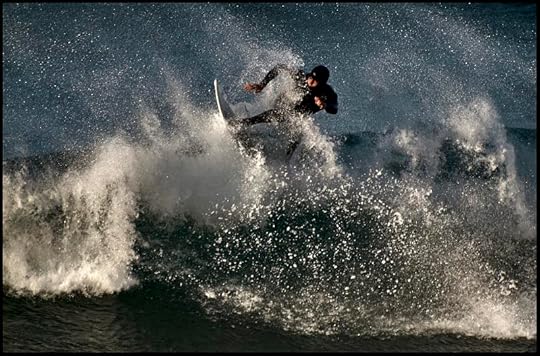
Photo by Pedro Menendez
Those Three Precious Books for Trekking and Surfing in Asturias:
1. Aeroguía del Litoral Cantabria y Asturias, published by Editorial Planeta, 1999. It now comes in a cheap pocket size version (bolsillo) and is a terrific photographic guide of aerial shots of the entire coastline. It helps locate beaches, their contours and breaks, and if you look closely, the footpaths meandering along the coast. It costs around 11.50 euros.
2. Guía del Surf en España by José Pellón.
This is a great resource for what beaches are good for surfing, where the camping sites and surf shops are, and what each surf spot’s conditions are. Online it goes for anywhere between 18.50 to 24.50 euros.
3. Guía de las Playas de Asturias by Javier Chao Arana.
This little book is packed with terrific detailed information on each of the hundreds of beaches in Asturias.
It breaks it down to a page per beach, going over each place’s physical characteristics, water quality, sports activities, access, camping grounds, and food establishments. It costs around 12 euros.
Okay, so they’re all in Spanish. But surf and water talk is practically an international language and English speakers with a little Spanish dictionary will get lots of information out of these.
The information in these books is invaluable regarding trekking and surfing the local terrain. Some good online sources for these books are: Casa de Libro; Libreria Nautica; and Agapea.
You can also find them on the ground, in bookstores (librerias) and surf shops in Asturias.
Two Parting Tips
The tide is dramatic in Asturias so be prepared for dramatic water level changes. In some places, the beach entrance will be completely under water and altered at high tide. Stay aware of the tides.
If you really want to surf Rodiles and Tapia de Casariego, these tips still apply. But be forewarned, if you are going to paddle out when that river mouth left at Rodiles is tubing and the locals are there, you better be damn good and not waste their time when it’s your turn.
Know the rules of the water and uphold them for yourself even if others don’t. Be impeccable. And if you’re not good enough to be out there, get out of the way and surf the smaller but fun stuff peeling down the beach (that’s where you’ll find me). 
This article was originally published on May 1, 2008.
What not to say to trans* people

Photo: agatha sea
1. What’s your birth name?
What’s your winter weight? Oh, is that rude of me to ask? Is it rude for me to speculate that you may be a different size in the winter than in the summer? Is it completely misogynist to suggest that your shape should not change? Ever? You’re right. Those feelings you just felt, that’s how I feel when you feel like you’re entitled to know my birth name. Would you also like to know my social security number? It’s hilarious to me when people get uptight when I ask who they voted for, but asking me something deeply personal about myself is totally fair game. Transitioning means that you have left behind that person. Yes, part of whoever you were born as, and who you grew up as (depending on when you transitioned) will always be a huge part of you, but that kind of sharing is for family, friends, and my therapist.
2. So what does it feel like?
I actually don’t fully understand what this question means. I wasn’t rebirthed from a dragon’s flaming vagina. I just like, you know, started living life as the person I was meant to be. So I guess, it feels great? How does that brand new job you just landed feel? How does finding out that your crush is totally crushing on you too feel? How does playing with a gaggle of puppies in an open field feel? Like pure joy? Accomplishment? Happiness? A little scary, but a whole lot of perfect? That’s what it feels like.
3. What do your parents think?
What do YOUR parents think about that time you drank too much, got into a cab, and thought that the touch screen was actually mobile karaoke? I’m an adult — while my parents have some bearing on my life, they are not the be all and end all of who I am and how I am. Of course they know. But mad, sad, happy, or impartial — it really would not have mattered. Shall we talk about your family secrets now? No, that would be rude? Oh, well I just figured, because you think we’re the best of friends, we were equally sharing. Me being transgender is not like you deciding whether or not to join the Peace Corps. It wasn’t a choice, so neither mommy nor daddy really mattered. Their support? The best. But this is who I am, with or without them.
4. So who do you date?
Do you have a comfy couch and maybe an eighth of bourbon? Because this could take a while. Being trans*, that’s my gender. Who I date, my sexuality — they aren’t mutually exclusive. I wish I could leave it at that, but I don’t think I’ve gotten you yet. You know how one of your friends likes buff guys, but your other friend is totally into lumbersexuals, and all you really want is a guy you can laugh with, but all of you went to the SAME high school? The fact that you all share the same alma mater has nothing to do with the guys you like.
Let me put it in (kind of) scientific terms: Gender is that thing that was slapped on your birth certificate. It was determined by what was between or not between your legs. If you are a trans* person, that gender marker was wrong — psychologically you were born with a different gender than your baby body represented. Sexuality refers to who you want to sleep with, settle down with, Tinder with, etc.
5. I keep seeing all of this transgender equality stuff in the news. Is it really that big of a deal?
So glad you asked! And with a smile on your face. You amazingly progressive person, you. Yes! Yes times a million, yes to the moon and back, yes infinity! The whole equality thing? Huge deal, seeing as I can get fired in most states for being trans* — that, I’m sure you can imagine, is a huge fucking deal.
Also, not to stay in this dark place but you did bring it up, did you know that a 2013 report from the National Coalition of Anti-Violence Programs found that LGBT people of color were nearly twice as likely to experience physical violence than their white counterparts? And according to the Anti-Violence Project, transgender women made up 67 percent of anti-LGBT homicides in 2013. So yes, us gaining not only equal rights, but public acceptance is kind of a big deal. Remember how people used to think that women were second-class citizens? This is kind of like that.
6. I have so many questions. Who do I ask?
I know when I have a lot of questions, I usually turn to the internet before anything else. It kind of makes it clear to me what questions are actually okay to push out of my mouth piece. After the internet I usually like to confide in my friends, though I don’t know if your friends are as cool as mine. I’m sorry if they aren’t. Look, whether or not you have ever realized it, you have met a transgender person. You probably don’t even remember their name, and if you’re being honest, who it was. So what does that mean? Trans* people are just like everyone else you’ve ever met. We are human. Everything else is just a formality. 
December 26, 2014
Story behind the shot: Kokkinias, GR
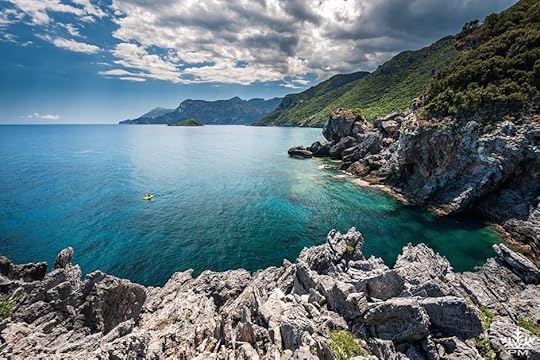
Photo by the author.
In the midday heat in Evia, Greece, I scaled up this cliff in flip-flops and a heavy camera bag. I felt like the biggest jerk on the planet. Stumbling over the jagged rocks, I reached the crest and sat down to enjoy the view. I looked over Kokkinias Beach where my mates were chilling out enjoying cold beers and saw this guy in a kayak paddling out for his daily workout. “What a lucky bastard,” I thought.
I snapped this shot with my Nikon D700 and the nikon wide angle 16-35mm lens and a circular polariser. I gingerly descended the rock face to join my friends — luckily, in one piece. 
A unique journey in Laos

Photo by Dietmar Temps
FIRST, EITHER FLY OR TAKE THE overnight train from Bangkok to Chiang Mai, the heart of Northern Thailand.
Chiang Mai is the first stop on a well-trodden tourist trail that runs to Luang Prabang, south to Vientiane, and back to Bangkok. Thousands of travelers funnel through this route each year with hardly a glimpse out the window of their air-conditioned buses.
You are not just another backpacker. You are looking to experience something different, something that will push you beyond your comfort zone and provide a glimpse of the ‘other Lao’, a strange, exotic, and immeasurably beautiful part of the world that exists a mere hundred meters from the path so many travel.

Sunset on the Mekong. Photo by Jack Zalium.
Houay Xai
We must first head north, away from Chiang Mai to Houay Xai, a small town situated on the Lao side of the Mekong River across from Chiang Khong, Thailand. Houay Xai is just a small port town, a jumping off point for people looking for boats down river to Luang Prabang.
You see the river boats crammed with locals and tourists that will chug downriver at a painfully slow pace, and you turn away. You look to the mountains and hills to the north of the town and can feel something pulling you inland, inexplicable and unrelenting.
The Gibbon Experience
In Houay Xai you will find the offices for the Gibbon Experience, quite possibly the most unique and exhilarating wildlife experience in Southeast Asia.
Located in the Bokeo Nature preserve, a 123,000 ha area of protected forest in one of the most remote corners of Laos, this project is fully operated by the local Lammet and Hmong communities giving visitors the opportunity to understand their dynamic relationship with the forests.
Mobility is granted through the thick forest via 11 zip lines spread out across three ridges with tree houses in the canopy as accommodations. The project is quickly becoming one of the more popular in the country, so making reservations a few weeks in advance is recommended.
Bookings can be made through the Gibbon Experience website.

Life in Luang Nam Tha. Photo by Anne Roberts.
Luang Nam Tha
A hard day of riding the bus through the forests of the Nam Ha Biodiversity Area on narrow dirt roads brings you to the small north western town of Luang Nam Tha.
Located in a broad valley on the Nam Tha River, and surrounded by tranquil rice fields and hills, Luang Nam Tha is one of the more scenic locations in northern Lao.
As a recipient of large amounts of funding from the United Nations Development program, Luang Nam Tha has developed into a major center for eco-tourism and is a significant destination for outdoor enthusiasts.
To many, however, the projects have begun to develop a somewhat “formulated” feel – superficial outings that focus on parading ethnic groups about in traditional garb while hawking cheap trinkets are quickly becoming the norm; experiences that provide little opportunity to gain any insights into the people’s lives.
Also, rapidly expanding rubber plantations are eroding the natural areas that once made the area so attractive. A quick browse among the tourist shops along the mainstreet, all sporting advertisements for identical sounding “tribal hill treks” says it all and you find yourself headed out of town on the first bus down the highway to Oudomxay Province.

The Standing Buddha of Oudamxay. Photo by Collin Key.
Oudomxay
Arriving in Oudomxay town can be a bit of a shock. A cursory glance will give the strong impression that this is not a tourist destination. Oudomxay is little more than a highway truck stop with a single strip of old buildings on either side of the highway covered in dust from recent construction and situated in a deforested valley.
Over the last few years, with assistance from a number of international non-governmental organizations, tourism opportunities have been slowly developing in Oudomxay.
Though lacking in the glamor and glitz of more established projects in Luang Nam Tha or Luang Phabang provinces, the tourism opportunities in Oudomxay are new enough to ensure a unique and genuine experience for intrepid travelers.
The most interesting option is an overnight hike to Khmu villages in the highlands of the La District. These communities represent the ‘other Lao’, the part of the country those of us who have lived and worked in the country refer to as the ‘working Lao’, the part that hasn’t been overtaken or transformed by monolithic tourism operations.
The working Lao is a place that has remained largely unchanged in the last 150 years. The best part about these communities is that visitors are still viewed and accepted as guests, not just as travelers, and certainly not as tourists.
Into The Heart Of Lao
The trip starts in the early morning at the offices of the Tourism Authority. (Backpacks and large bags can be safely stored in a locked room in the office).
You are met by a local Khmu guide in a truck and then taken 30km on the highway to the north into the La District, one of the poorest areas in the province.
From there the truck gets off the main highway and drives 12km down a dirt and mud road that barely clings to the side of hills overlooking extensive rice paddies.
Eventually the truck comes to a stop at an indiscriminate bend in the road, and you can’t help but wonder why the guide has chosen this spot to park the vehicle. The guide shows you the trail head hidden at the roadside, just a small, single track running into the forest.

Photo by Collin Key.
For more than two hours you hike through the jungle, crisscrossing a small stream that leads to the village, cut through a narrow, steep valley with thick untouched patches of old growth subtropical rainforest obscuring the sun overhead. This path is the only access to the village, and you meet school children who nimbly pass you by on their way home from another week at school.
You arrive at the village site in a burst of sunshine and green as you step out from the forest and see the thatched and bamboo huts settled on a small hill at the center of the valley.
Idyllic and serene, are words that seem wholly inadequate to you as you walk the last few hundred metres into the village centre, seeing the sunlight slide down the greenery of the surrounding hills and settle around the community in a light golden haze.
The village is largely empty at this time as the residents are all still out working in the fields further up the valley. You are taken to the home of the Phorban (village father) and invited to sit in the shade under the house to wait, marveling in wonder at the magical place.
That night, after the villagers have returned from the fields, and everyone, including yourself, has taken their daily bath in the local stream, you share a meal with the Phorban and his family.
The food is simple, boiled chicken in a broth with vegetables taken from the forest, and a side of sticky rice all shared from a mat placed on the floor.
Through your guide, the Phorban tells you the story of his village, their daily efforts to eke a living from the surrounding hills and fields.
The floor, made from a woven matt of bamboo, dips and shakes with every movement, the vibrations tingling up your spine to the base of your neck, giving you the sensation that every person in the room is interconnected, inseparable.
When the women across the room rock back and forth screaming with laughter, or when the men holler and bellow, encouraging a friend to drink from the communal jar of rice whiskey, you imagine that you can feel their emotions, their joys, hopes and dreams for the future, pulsating through the strips of bamboo bark like notes on vibrating piano strings, tickling your feet, extolling you to release yourself and join them in this special moment of community.
You do, and in that moment you realize that, when you leave, a small piece of your heart will remain in this beautiful valley with these beautiful people.

A young woman in Phongsali. Photo by Andre and Marie Springer.
Phongsali
After emerging from the forests you have a decision to make. You can return to Oudomxay and catch the bus to Luang Phabang, or you can continue your divergence from the beaten path and head to Phongsali province, a 31/2 hour bus ride to the north.
The town of Phongsali is no more pretty or entertaining than Oudomxay was, but that is not the point in visiting this area.
After a nights rest in one of the towns simple hotels, catch a sawngthiew (a truck with a cover and benches in the back for transporting large groups of people) to the town of Hat Sa, about an hours ride away. From here, numerous boats make daily trips down the Nam Ou River to Muang Ngoi Neau and a seat will cost $10.
(If pressed for time, Muang Khua is a good halfway point for catching boats on the Nam Ou between Oudomxay and Phongsali.) .
The ride is long, taking between 7 and 10 hours, and cramped, but this is among the most beautiful stretches of river in Lao, and you are almost guaranteed to be the only foreigner on board.

Mist over Muang Ngoi Neua. Photo by Anne Roberts.
Muang Ngoi Neua
You will be thrilled and relieved to see this small village on the banks of the Nam Ou appear from around a bend. Muang Ngoi Neua, located one hour by boat north from Nong Khiew, is quickly growing in popularity among tourists, but it has managed to maintain its charming atmosphere none the less.
With mountains towering on each side, and a number of decent accommodations and restaurants, the village makes for a wonderful place to relax and recuperate after a long boat ride.
Editor’s Note: Check out Justin Landrum’s Guide to Muang Ngoi Neua.
Nong Khiew
Nong Khiew is a bustling town straddling the Nam Ou River and situated around the Highway 1 bridge. There are a number of hotels that have huts overlooking the river ranging from simple bamboo to upscale rooms charging as much as $18 US per night.
Western style food is available – a definite relief after so many meals of sticky rice and meagre soups of vegetables and broth. Charter boats to Luang Prabang cost about $100, or there are daily ferries that run downriver to Luang Prabang for $10.00 a seat.
It’s another seven hour boatride, though the views are still quite spectacular. For those in a hurry, Sawngthiews can be hired to take you into Luang Prabang within a few hours.

Pha Pon Golden Mountain near Luang Prabang. Photo by hleung.
Luang Prabang
End of the line! A UNESCO World Heritage Site, Luang Prabang is a beautiful city replete with boulevards and French colonial architecture. Numerous restaurants and hotels offer respite from your many days in the forest.
Daily flights are available back to Bangkok. 
This article was originally published on May 12, 2008.
How to spot a Brazilian

Photo: alobos Life
1. We’re yelling.
Brazilians might start off at a normal voice level, but by the end of the conversation we’re usually shouting, especially when trying to make a point. If there’s a Brazilian group, we’re probably screaming over each other.
2. We’re bundled up when it’s 70 degrees.
Brazilians know two seasons: summer and the dead of winter.
3. We’re crazy aggressive drivers.
It can be thrilling and terrifying to ride in a Brazilian’s car. We have short attention spans and are never afraid to lay on the horn. We’re used to the chaotic traffic in Brazil so we’re zipping in between cars, cutting corners, and getting within inches of other vehicles.
4. We’re constantly taking pictures.
Frequently of banal things like limos and billboards. And if we’re in the picture, it’s always followed by “deixe eu ver” (let me see).
5. We’re problem solvers, in maybe not the most logical way.
One way or another, Brazilians will find um jeito. It might not be efficient, but it will be creative. It might involve a few injuries or a little sucking up in the process, but it will get done.
6. We’re nowhere to be seen for a week in February.
Carnival, baby! We have to watch the floats, compare sambas, and argue about how the results are fixed.
7. We’re speaking Portuguese, not Spanish.
And we’ll let you know it.
8. We’re very neat.
Brazilians frequently clean corners of the house that most people don’t clean yearly. Careful if you live with a Brazilian: dirty dishes are not tolerated.
9. We’re great hosts.
Whether you’re going to a party or just popping by to say hello, Brazilians will make you feel welcome and pampered with good food and lively conversation.
10. We’re pulling off the natural look.
No need for make up or perfect hair. Brazilians are those people who you get out of bed with an angelic glow. It must be something in the water.
11. We have a remedy for anything.
Any time you mention an off-hand medical complaint, Brazilians will dig through their purses or medicine cabinets until find the perfect solution.
12. If single, there’s a good chance we’re living with parents.
In Brazilian culture, kids usually stay at their parent’s house until get engaged or married. There’s no stigma, as in America. And don’t be surprised if the parents still cook and clean for them…
13. We’re willing to share our most private problems.
The simple question, “How are you?” can yield answers from relationship drama to family scandal. #nofilter
14. We put ketchup on pizza.
Yeah, it’s weird.
15. We still think brands like Hollister and Abercrombie & Fitch are cool.
Enough said.
16. Every hour is happy hour.
Drinking at 10am? Brazilians don’t see a problem.
17. We’re arguing with you about soccer.
Never enter this argument with a Brazilian. We start appealing to the heart and things you’ll never understand. You’ll never be able to prove that football is as artistic as futebol.
18. We have confidence.
Brazilians fly off an air of self-assurance. We’re happy and beautiful, without being arrogant.
19. Our coffee will put hair on your chest.
There’s nothing a Brazilian hates more than weak coffee.
20. We’re late.
You can always count on the tardiness. 
7 things Russians love to hate

Photo: Nikolai Vassiliev
1. Russians abroad
Every Russian you meet abroad secretly hates other Russian tourists and tries to avoid them. Sometimes we even pretend we are not Russian and have nothing in common with the big noisy group of people on a holiday with “all-inclusive” package who flood Spain, Egypt and Thailand. It must be them who are responsible for the image of Russian people abroad, and we hate them for that. Everywhere I travel, I see long faces after I say I am from Russia, because people expect aggressive behavior, heavy drinking and no respect for the country visited, with zero interest shown in the culture and the people. Not all Russians are like that, we just often pretend we come from a different place because of our bad reputation.
2. The Moscovites
The capital is by far the richest city in the country, but it seems to contain just work, work, and more work. Everyone there is in a rush, and the Moscovites talk much too fast, with a funny accent which ignores the existence of the sound “o”. Often assuming there is no life outside Moscow, the Moscovites are very surprised when someone prefers Kazan or Novosibirsk. This arrogance hasn’t helped them make many friends. Moscow is like a separate country inside Russia — everyone who comes from the capital says it proudly, but the rest of the nation thinks the Moscovites are cocky and insolent.
3. The roads
Russians have a saying, “Russia has two misfortunes — the fools and the roads”. Though the first one is subjective, the condition of our roads is assuredly disastrous. Some of them had last been repaired when Ivan the Terrible was alive, not mentioning vast distances without roads at all. Adding insult to injury, in winter (which, as you already know, lasts forever) the roads are glazed; pedestrians move slowly, making tiny steps like penguins, and drivers spend fortunes on winter tires.
4. Our national football team
Russians favorite sports are ice hockey and football. While we are very proud of our hockey team, football always brings disappointment. We are in a love-hate relationship with our national football team. There always is hope it will be different this time, but the scenario never changes. The game is lost, and the country is heartbroken and angry at the players who didn’t even seem to try.
5. Our government
Politics in Russia is the most popular of all the kitchen conversations. We spend hours passionately discussing the stupidity of the new laws and the president’s latest speech, wondering if the prices will go up again and complaining about the corruption level. One of the main motives is that the grass was greener in the USSR. We blame the government for the reform of education which led to a decline of the science development in the country and for the reform of the health care system that reduced the number of hospitals and doctors. But when it comes to action, almost no one goes to the streets to actually protest — we prefer verbal battles.
6. Outside criticism
While we can criticize our country all we want, us Russians can’t stand it when foreigners criticize our country. We are a very hospitable nation, and it is one of the most important things for us to make guests feel welcome, comfortable and taken care of. You can make great friends here, until you dare say something bad about Russia — that’s a dealbreaker. Even if what you say is reasonable, it will create tension. Big tension. Your new Russian friend will become defensive and spend at least two hours trying to convince you that Russia is flawless, even if deep down they know that is not true. .
7. Winter in general
Winter evokes lovely images of skiing or ice skating, throwing snowballs, and making snow angels. You might assume us Russians love winter. But, trust me, when you see snow every single year for 4-to-6 months, you get over it quickly. In winter Russians live in darkness. We wake up and go to work when it is still dark, we come back home when it is already dark.
And it is damn cold. If staying home is not an option, vodka is a solution. If getting drunk enough to forget about how cold it is isn’t possible, forget about going out. When it hits 20C below zero, eyelashes become white and noses blue, people cover their faces with extra scarves and no one even talks in the streets. When it is 25C below zero, girls give up trying to look fancy and put on practical valenki, traditional Russian boots made by felting wool. 
12 of the best Airbnbs in Greece
IN YEARS PAST, travelers had few accommodation options when traveling. Choices included hotels, motels, or, depending on the location being visited, hostels. But in recent years, Couchsurfing and Airbnb have given travelers important new options, allowing them to feel more at home than a typical hotel stay would.
On some occasions, these new sorts of accommodations even provide opportunities for new friendships and meals with hosts. It’s hard to argue with the results considering the positive experiences so many travelers have had. As the service grows, it’s likely that the choices travelers have will continue to grow as well.
Decide for yourself — take a look at 12 of our favorite Airbnbs in Greece and compare them to your last hotel stay. 

1
All white
Not the White House that normally comes to mind, this “White House” can be found on Thira (also known as Santorini). The villa contains three levels which can be separated, or used as one space for a large group, if desired. The top level contains a balcony, which overlooks the volcano and provides views of Oia. The space below is a cave house, which shows how the people of the islands utilized all available space within Santorini’s “cave” dwellings. A stay on the Greek island is incomplete without staying in one of the white homes. (See the listing)

2
Luxury villa
Found in the foothills of the Mainalo in the Peloponnese peninsula, this villa contains 8 bedrooms and 9 bathrooms, making it the perfect spot for a large group navigating through Greece or for an individual looking to spend his or her life savings. The villa, which originally dates back to 1843, was renovated to provide visitors with the maximum amount of luxury, and it shows. The villa contains a spa and allows for ATV adventures, river rafting, and other experiences, making a stay here quite the alternative to staying in a hotel. (See the listing)

3
Modern mees traditional
Named 3Arches Traditional House, this island home in Santorini is a restored historic building. Each of the 3 bedrooms contains its own exterior entrance, allowing for a maximum amount of privacy. The home is rather bright and colorful. And if you’d rather go and enjoy the nice weather, there’s no shortage of outdoor space to take advantage of, and a traditional barbecue oven and wet bar. Actually, there seems to be little reason to head back inside other than for an afternoon nap. (See the listing)

4
Blue waters
Villa Roula measures in at 265 square meters and contains 4 bedrooms. The minimum stay is 7 days, allowing for ample time to take in all the surroundings, from Souda Bay’s blue waters to the olive trees nearby. Ideal for kicking back, the property contains a large pool as well as traditional barbecue ovens. And considering the typical weather in the region; dining al fresco isn’t an option, it’s a necessity. (See the listing)

5
Zen dream
A newly-built villa in Zakynthos on the Ionian Sea (famous for having some of the bluest waters on the planet), Cielo Villa is nothing short of what many people would call a dream home. With a large pool, four bedrooms, four bathrooms, an outdoor dining area, stunning sea views, all-new furniture and appliances, and most amenities that come to mind, you’d be surprised to find out you’re not in a five star hotel upon waking up in this villa. (See the listing)

6
Balcony views
This Kalyviani home is referred to as Villa Arhontariki. Built in the early 1900s and recently renovated, the villa stays true to its Cretan roots and utilizes much of the same architecture it originally possessed. With 5 bedrooms and 3 bathrooms, it’s meant for a large family – the same goes for the pool area, surrounded by lush greenery. Balconies and bay windows abound, so Villa Arhontariki also provides for views of the sea and peninsula. The pool will be nice to take a dip in if you decide to walk away from the balcony for a moment.

7
Poolside retreat
Sitting on a plot of 7,000 square meters, you’d better bring 23 friends to visit the Villa Grand Retreat. With all the makings for the ultimate pool party, the villa provides views of the Aegean Sea as well as Delos Island. Its interior is a mix of modern décor and traditional Greek stonework and architecture, making for an eclectic and impressive look. Hungry? A full-time chef is available upon request, as well. Oh, and you’d better bring 23 friends to help you pay for the stay, too. (See the listing)

8
Luxe suites
Walking distance from Spilia Beach, this home is appropriately named Porta del Mare, or “Gate to the Sea.” You’ll likely feel as if you’re staying in a resort with the daily housekeeping service ensuring your sheets are always fresh. With a terrace on which a hot tub can be found, you’ll probably find yourself doing less sightseeing than you’d originally imagined, too. No worries though – there are plenty of sights to take a look at from the terrace while you’re dining al fresco each evening. (
Affecting the voice of travel

Thy Tran in her kitchen. Photo by the author.
THY TRAN is a San Francisco-based writer and chef-instructor who specializes in the history and culture of food. Her research into how diverse communities grow, cook, sell, and eat has taken her from Seoul to Singapore, Cusco to Kochi. In addition to contributing features in publications such as the Washington Post, The Los Angeles Times, Saveur and Fine Cooking, she co-authored Asia in the San Francisco Bay Area: A Cultural Travel Guide, Taste of the World, Essentials of Asian Cooking and The Kitchen Companion. Thy is a founder of the Asian Culinary Forum, a nonprofit organization that hosts multidisciplinary symposia exploring the forces that affect Asian communities and their cuisines around the world.
Bani Amor: Tell us about yourself. How would you describe your work?
Thy Tran: Firstly, I’m a freelance food writer and editor, with an emphasis on providing historical and cultural context in nonfiction culinary reference books (cookbooks, food encyclopedias & dictionaries, travel guide books, etc.). I’m also a chef-instructor (I was trained as a chef and used to work in restaurants), so I teach a range of cooking classes, for both youth and adults, lots of nonprofit cultural centers, culinary academies, and the like.
I started a nonprofit, Asian Culinary Forum, to try and address the media’s messed-up representations and narratives of Asian communities and their food. But that’s definitely a labor of love — all volunteer work but extremely rewarding, too.
For the work itself, I veer strongly away from trend or lifestyle topics. I’m mostly interested in how people cook in their own homes, the kinds of decisions they make for their themselves and their families, and how what we eat is a living thing, always changing, no matter how hard we try to imagine it as “true” or “right” or “authentic.”
I didn’t start out specializing in Asian cuisines (I was trained in “classic” French traditions), but once I started freelancing, it was obvious that people expected me to address Asian cuisines and would, more importantly, pay me to do that. I do LOVE what I do, so no complaints. But there’s definitely some pigeonholing that happens in the professional world.
Bani: How do power dynamics play out in the ways we read and write about food?
Thy: Oh, honey, food is ALL about power!
Cookbooks that are meant to be sold to travelers as souvenirs will still have a bit of romanticizing of history, rural communities, mother’s kitchens, etc., and then set up a dichotomy between imperial dishes (which are the ones that tend to become famous in other countries) and “country cooking” of the peasants.
Take any classic cuisine, from France to China to Thailand, and it’s the flavors and stories of the court society that is served for special occasions, including upscale restaurants for travelers. Parallel to that, people like to “discover” and experience rural food off the beaten path. The cookbook industry reflects that tendency to think of food in those two categories. Normal, everyday food regular people eat is not what most people think when they think of the flavors of another country.
There’s a difference between power and privilege. The two are related, of course, and as international travelers and women and people of color, we negotiate them in complex ways.
When I was a student and traveled low budget in Europe, I had trash thrown at me and learned the racial epithets for “Asian” in various countries just by walking down the street. Now, in business dress, people assume I’m Japanese or Chinese, and so they treat me very well, to my face at least, because they think I’ll spend lots of money.
Bani: Then it shifts when we look at who’s marketing whose culture for which audience and who gets appointed the authority on a country’s cuisine.
Thy: Ahh, yes. And hence the reason that it was three women of color, all of whom worked in food publishing, who founded the Asian Culinary Forum. We were so tired of seeing others determine the narratives.
Bani: That’s dope.
Thy: Some would say it’s “the market” who determines what ends up in cookbooks. For example, editors will say that people will want, for example (a real one), a story about clay pots in Vietnamese cooking, because when they go to the restaurant, they always see on the menu clay pot catfish or tofu or whatever dish.
You will try to explain to the editor that NO ONE in Vietnam or no Vietnamese immigrants use clay pots. It was used during times of war and poverty, when the military needed metal or when a person can’t afford modern cookware. But the editor will say: well, we already shot the photo, and the food stylist used a really beautiful clay pot, and so…please write a few paragraphs about this “traditional” method of cooking.
Notice that the readers are always assumed to be white, or at least not of the ethnicity of the author of color. That’s a seriously huge assumption that deeply affects the voice of travel and culture (including food) writing.
Bani: Yes, the default reader remains white, even though statistics show otherwise.
Thy: So, how can you argue with “the market” which is a stand-in for “majority” which is stand-in for “white”?
Bani: And the writer must twist their voice to suit the white gaze. The result in a lot of food and travel writing is you end up getting a lot of white people tryna sound like each other.
Thy: I used to joke that Saveur magazine had three basic narratives for their features:
1. Back in college, I visited this completely alien country and fell in love with it immediately. I wandered the alleyways and discovered amazing places with real people serving real food. I revisit as often as I can, and I now consider it a second home. Here’s a great recipe for paella.
2. When we fled the war, the only thing we took were the clothes on our backs and our grandmother’s recipe book. Now, join me as I return to my homeland and learn how to make dumplings while reconciling with past devastation and modern development. [Insert requisite description of boy using cell phone while riding a water buffalo.]
3. When I was little, our nanny/cook/farm hand would let me sit on a stool in the kitchen and she’d sing while grinding corn. Here is her recipe for tamales.
Bani: Terrible, please stop! Is that what you meant by pigeonholing in the industry – getting sicked with the Asian stories, as long as it’s in their voice?
Thy: I could go on for hours about voice, whose voice becomes expert and why, and the way money becomes a part of that equation. It’s a very touchy topic among my colleagues, and I can tell you that there are many Facebook debates about this among food writers.
Well-meaning white writers feel real confusion and, depending on their personality, varying levels of anger and grief about why we writers of color are upset at the invisible expectations. I should say, invisible to them.
Pet peeves — like anonymity in photo captions (“sidewalk vendor serving up delicious soup”) or tired tropes (“her grandmother’s recipe”) — sound like petty complaints and apparently should be dismissed in the face of a world traveler’s good intentions to explore and educate.
Deeper issues, such as who can become instantly an expert in anything outside of their own experience gets lost in things like “the market” or by explanation of passion being the most important part of travel and writing.
Bani: Their delicate feelings always gotta come first.
Thy: I think the privilege of being a blank slate — that any interest can become an expertise (and one that earns you money) — is something still very much taken for granted. On the other hand, I can assure you that there isn’t a single editor who would sign me up for an article on traditional uses of olives, even if I traveled in the Middle East for a summer and read a few cookbooks — which is what many white writers can get away with.
Bani: Shit. Seems bleak.
Thy: Actually, I think the whole abundance of unique personal approaches to cooking on the internet now is a good thing for this. When you have gatekeepers, the stories are obviously much more controlled. There isn’t money in internet writing, but then, that’s a good thing for the larger picture.
Bani: Yes — fuck the gatekeepers. The larger the picture, the better.
Thy: I also make a point of holding editors accountable for terrible decisions. You don’t want to burn bridges if you plan to keep making money, but there are ways of letting the editors and others in the industry know about irresponsible, unprofessional practices. Once, an editor decided to change my submitted article drastically without letting me know. I wrote a piece on Sikhs and their tradition of serving free food to everyone regardless of race or religion in their gurdwaras. I mentioned a festival in California’s Central Valley where 90,000 people shared food with all-volunteer labor and no money exchanging hands. The editor decided that couldn’t possible be right, and so she just downgraded the attendance to 9,000.
She also shifted the entire article into first person, and even made up some conversations at the temple, in order to make it more “authentic.” This resulted in me seeming to talk while everyone was cooking in the langhar, which would have gone completely against the practice of meditation and silence in that particular kitchen. The article ran that way.
The changes were so egregious that, years later, I mentioned them when I was a speaker at a major food conference in front of nearly a thousand other writers and editors as an example of what needs to change. So, never stop fighting, but you just have to think carefully about where you can make the most impact. 
This interview originally appeared at Everywhere All The Time and is republished here with permission.
December 25, 2014
10 comments servers are sick of

Photo: Chris Goldberg
1. “What’s good here?”
You’re pretty much asking us to shit on at least some of the offerings of our fine-dining establishment. If we tell you, “Everything is good!” we’re not getting anywhere. If we list our favorites, they might not align with your food preferences, and if you ask us, “Which is better?” we’re just going to pull out the strong points of each dish and hope you don’t push us further. Once it gets to a tug-of-war ending in “But if you HAD to pick,” we get super frustrated, because then if you hate what we shared, it’s all our fault.
2. “Can we have that table instead?”
Spoiler alert: Your food is going to taste the same wherever you sit. I know this is piece of information is earth shattering. Do not request that we ask the couple currently occupying the corner booth to move because you’re so adamant on dining there. We have no desire to appease whatever ridiculous reason you’ve thought up in your head that you feel makes this table is better than any of the other seats in this restaurant, because it won’t make your meal taste any better.
3. “Can I order off the kids menu?” (from a grown-ass man)
The “12 and under” fine print isn’t there for kicks. No sir, you cannot have four chicken tenders for $5.95, just like you can’t get into a movie for the price of a child’s ticket, or get the senior-citizen discount until you’re 60. If we had a ball pit or bouncy castle, that would be off limits to you too.
4. “It’s so loud in here!”
Yes it is, because you’re dining out on a Saturday night at a busy, popular restaurant. No, I cannot ask the table next to you to keep it down. They’re having a good time, and are paying for their meal just like you, so they’re entitled to laugh loudly in their space. If you want a nice, quiet dinner, where the only sound is you and your companion speaking softly to each other, do us both a favor — have dinner at home.
5. “Can we have separate checks?” (Especially when said at the end of the meal)
So, you want us to divide your table’s check into six separate ones…because you can’t do basic math? You really can’t stand the thought of just splitting this evenly due to the fact that your chicken dish was $3.35 less than the other things your friends ordered? Or are you trying to appease the cheap friend who didn’t drink anything, and only ordered a side salad for a wild $12 night out on the town? Sure, we’ll get that done for you right away…as soon as we’re done trying to remember who had which cocktails, since you’ve all been drinking like fishes for the past three hours.
6. “Does this come with anything?”
Particularly in the United States, which typically serves a starch-laden side with every meal, an item listed on an a la carte menu might seem to be lacking if there’s no mention of fries, potatoes, or anything other than the dish itself. Sorry if you’re used to getting the value menu over at McDonald’s, but that menu description was written that way for a reason — to detail everything you’re getting when you decide to order it. If it’s not listed below it, look around the rest of the menu. If you still can find it, ask a friend.
7. “It didn’t say that it came with (insert item here).”
Actually, it did, you just didn’t read the description the entire way through, and now the kitchen staff, manager, and owner are all angry at us for your mistake. Oh, you want to fight about whether or not that item was listed in the explanation, with the server who has looked at this menu every day for months or even years? Yes, we will bring you the menu and show you exactly where it says “topped with olives,” but you’re going to feel awkward when we prove you wrong.
8. “Surprise me.”
This is the equivalent of a client you’ve never met before, and know nothing about. He/she walks into your office and after you ask them, “What can I do for you?” that person replies, “Surprise me.” You have no idea what this person is partial to, what they hate, or even what they’re allergic to. When our tip rides on whether or not you like what we’re bringing you, this isn’t a gamble your server wants to take. So please, at least give us some guidelines here so that we’re not sticking you with an EpiPen post-oyster-shooter, after finding out you’re allergic to shellfish.
9. “I absolutely hated it.”
Look, we’re here to make your dining experience as pleasant as possible — because our bank accounts depend on it. When you hate what you ordered, suffer in silence, and wait to tell us your true feelings about your dish until after you’ve choked down the entire thing, no one wins. You’re unsatisfied, and therefore you’re going to tip us poorly, or leave us a subpar review, when we could have had the chef fix you something to your liking. A simple, “I’m not crazy about this” could have helped avoid all of this in the first place.
10. “Is this your real job? What else do you do?”
Imagine if we came to your office and asked you the same thing. While there are plenty of students who work as servers to pay their expenses during college, and artists who wait tables on the side while pursuing their creative endeavors, please try to understand that there are actually people who enjoy this profession, and earn a living doing so. Not everyone was born to sit behind a desk for 8 hours a day. 
Matador Network's Blog
- Matador Network's profile
- 6 followers



